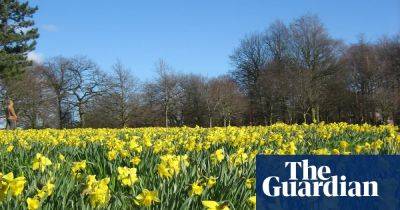‘Unpredictability is our biggest problem’: Texas farmers experiment with ancient farming styles
In one of the toughest growing regions in the US, commercial farmers like Frank Machac are experimenting with a style of ancient agriculture more known for soil health than profit.
They are perhaps unlikely budding agroecologists. “My number one concern is yield, I’m not worrying about climate change,” said Machac, 60, a ruddy-faced straight talker with 30 years’ farming experience in the Rio Grande Valley (RGV).
Machac is among a group of farmersdecked in sturdy boots and faded jeans gathered around a mini weather station in a hot and muddy field of sorghum – an ancient nutritious grain grown for cattle field on commercial farms across the RGV.
The 400-acre field is part of a real-farm collaborative research project to figure out how – or if – cover cropping, a regenerative agricultural technique, can help commodity farmers become more climate resilient.
“If cover crops can make agriculture more sustainable without me losing money, then it can’t hurt, but we have to get it right,” said Machac, who currently rents 3,000 acres across Hidalgo county, Texas.
Cover crops are planted between growing periods for cash crops – grains, legumes, vegetables and fruits farmed to sell or eat – to nourish and stabilise the soil rather than leave it exposed. It’s an ancient practice being heavily promoted by the US government, as a way to help 21st-century farmers mitigate and adapt to rapidly changing weather conditions.
But cover cropping poses particular challenges in this water-scarce region where around half the farmland depends exclusively on rainfall – and many are climate skeptics.
For the past two years, portable weather monitors measuring temperature, rainfall and soil moisture have been collecting data across the field which is
Read more on theguardian.com

 theguardian.com
theguardian.com











